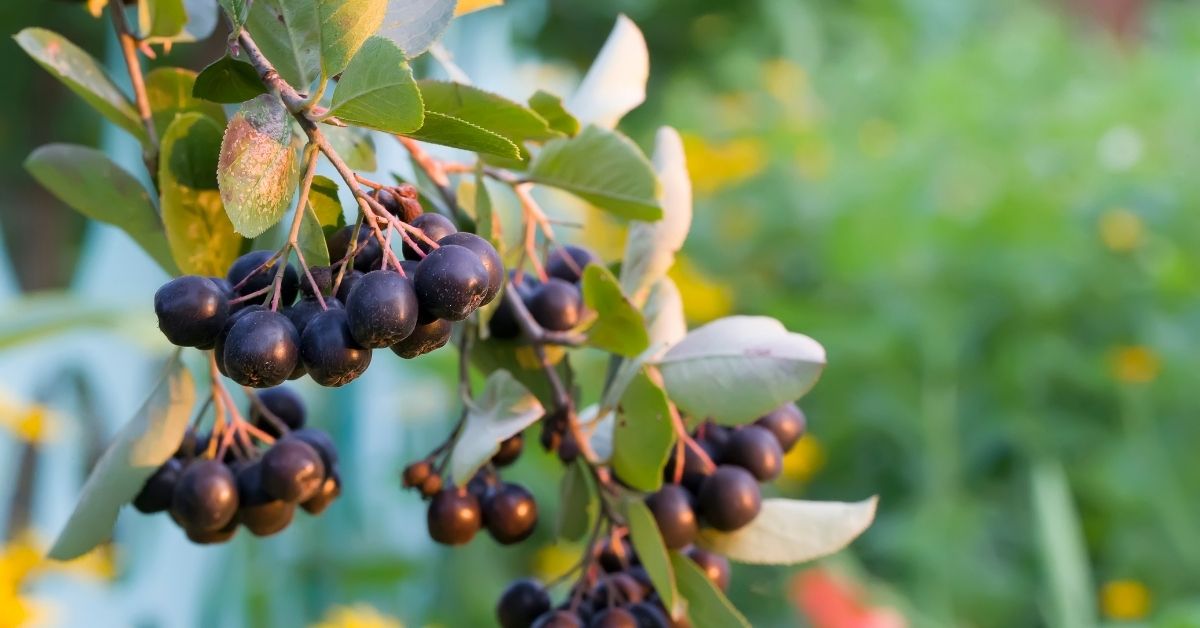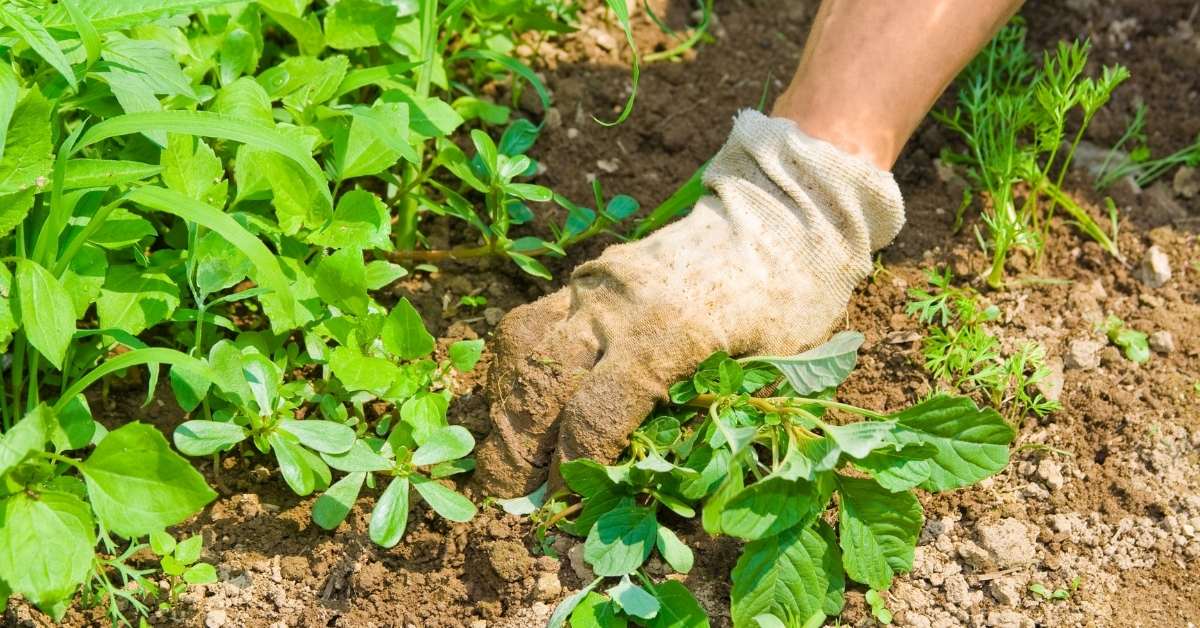The chokeberry is becoming increasingly popular thanks to its fruit rich in vitamins and its attractive autumn color. This is how you plant and care for the fruit tree properly. Here you will find a detailed guide on how to grow black chokeberry, plant, grow, care for, propagate, and use.
The chokeberry is becoming increasingly popular thanks to its fruit rich in vitamins and its attractive autumn color. This is how you plant and care for the fruit tree properly.
Alternate Names of this beauty: Aronia, Pyrus melanocarpa. Photinia melanocarpa
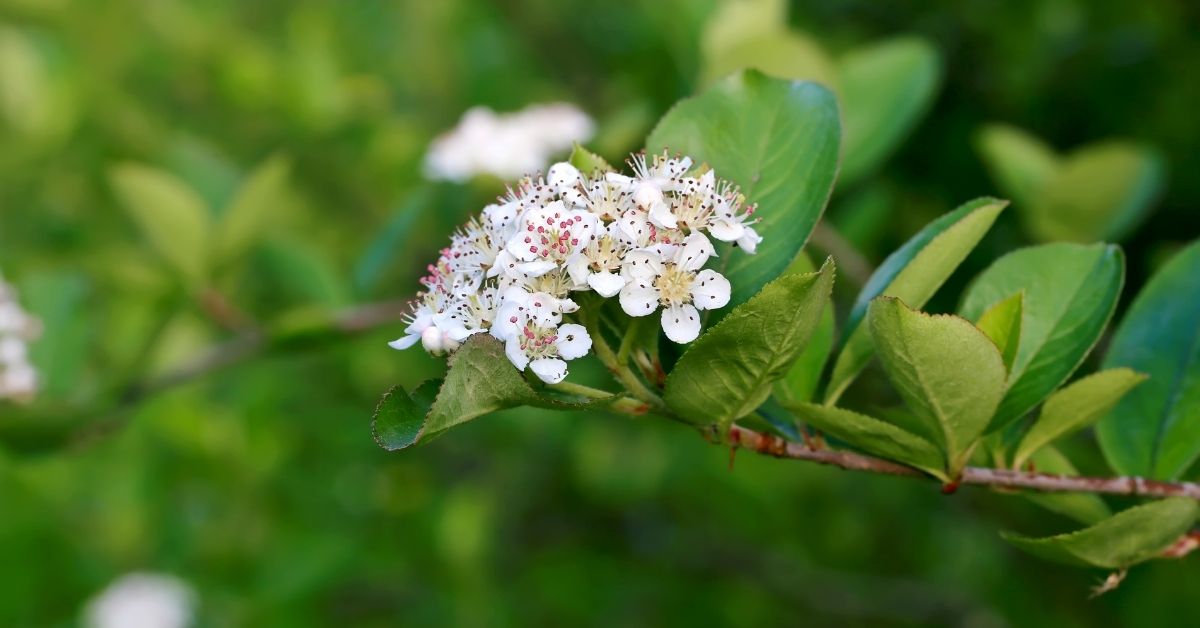
Black Chokeberry Origin
The black chokeberry (Aronia melanocarpa), also known as black mountain ash or bald chokeberry, is a rose-like shrub (Rosaceae). It is endemic to eastern North America, where Native Americans have prized it as a vitamin-rich winter diet for hundreds of years. They were discovered and brought to Russia by Russian botanist and plant breeder Ivan Vladimirovich Michurin around 1900.
It was quickly farmed on a wide scale, particularly as a source of colors for the food and pharmaceutical sectors, due to its great cold resistance. Many Eastern European nations and Scandinavian countries currently have Aronia crops.
Since the 1970s, vitamin-rich fruit has been discovered in the former GDR, but more and more fruit farmers are discovering wild fruit as an intriguing alternative to traditional forms of fruit in the rest of Germany.
Plant specifications
| Growth Type: shrub | Light: sunny to semi-shady |
| Length: 40-80 inches | Width: 40-80 inches |
| Soil type: dry to moist | Growth characteristics: foothills bushy multi-stemmed |
| ph level: neutral to slightly acidic | Flower color: White |
| Lime tolerance: tolerant | Flowering period (month) May |
| Hardiness zone: 3 to 8 | |
| Garden style: cottage garden, orchard, natural garden, park area | Fruit properties: edible |
How To Grow Black Chokeberry
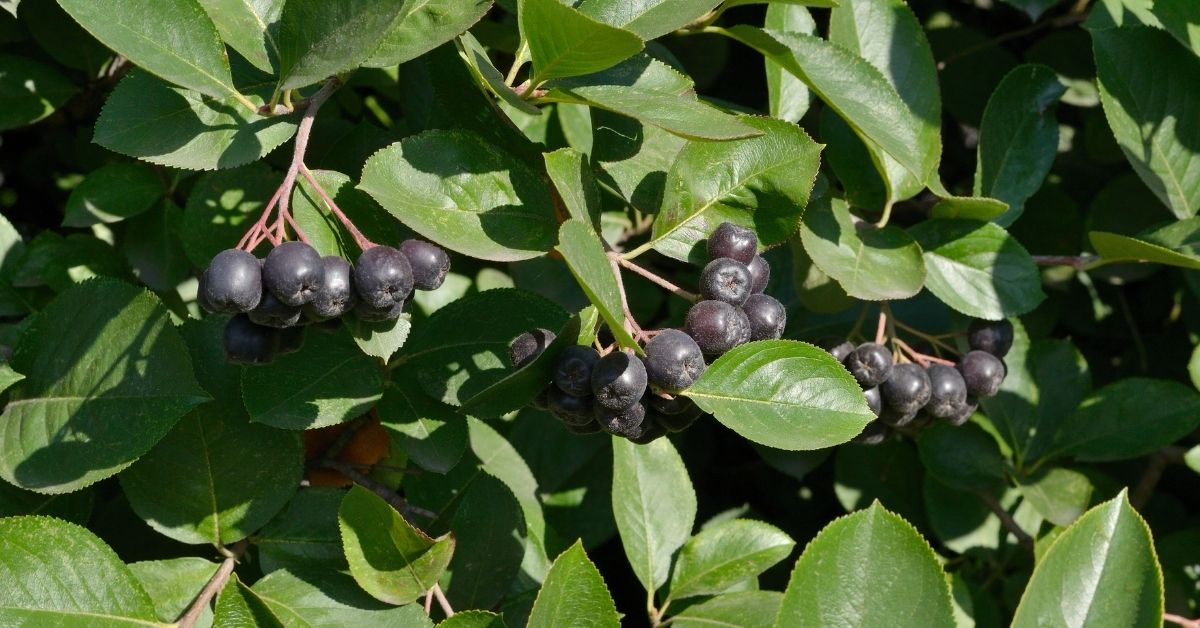
Growth
Black Chokeberry shrub bushes can reach a height of two meters. It grows in tiny thickets with short spurs over time.
Leaves
The obovate leaves range in length from 2 to 7.5 cm. The main surface is lustrous deep green with a paler bottom. Chokeberry leaves become vivid crimson when the berries start to mature. The entire bush transforms into a beautiful eye-catcher in the autumn.
Blossoms
Flat panicles of small, pure white single flowers with five petals appear in May. The inflorescences are similar to the umbels of rowan berries but are slightly smaller.

Fruit
The Aronia melanocarpa produces spherical berries up to 8.5 millimeters thick during the summer. They are aubergine in hue at first, then glossy black. The fruits of the shrub will remain on the bush far into the winter if they are not removed or devoured by birds. From August through October, the harvest season is in full swing. The fruits have a little core, similar to real apples.
Many growers start picking the pea-sized fruits in July. However, even if the skin is already dark purple in color, they are usually not ripe enough. It’s also very uncommon for a single umbel to have fruits of varying stages of development. Split a portion of the fruit in half to determine if the inside is also colored through before you begin harvesting.
Location
The chokeberry prefers a sunny to partially shaded place. Like the sea buckthorn, the shrub is wind-resistant and tolerates salt. As a result, it is also appropriate for coastal areas. Aronia melanocarpa, on the other hand, thrives at high elevations and low temperatures. It can even withstand frosts of – 35 degrees Celsius.
Soil requirement
Chokeberry may be found in practically every soil, ranging from wet clay to dry sand. However, in loose, humus-rich, and lime-poor soils, a heavy fruit load is to be expected.
Planting
Autumn is the best season to plant Aronia melanocarpa since the shrub has shed its leaves. Because the shrub generates root suckers, a root barrier of sufficient size should be supplied. Shrubs may be planted in pots virtually all year. Pruning isn’t required.
On the other hand, in the case of bare-rooted shrubs, all damaged shoots should be eliminated, and all others should be trimmed down by roughly half. It’s also a good idea to cut the main roots fresh and remove any damaged portions.
Care
The black chokeberry is a low-maintenance plant that is exceptionally versatile. You can usually do without fertilization since the shrub produces good yields even without additional nutrients. However, the plant is grateful for occasional compost.
Cut
Prune any branches that are too close together in the spring after the first year, and trim new bottom shoots by about a third to ensure that they branch out well. The oldest main shoots should be taken off in late winter every two to three years for rejuvenation.
Aronia melanocarpa Use
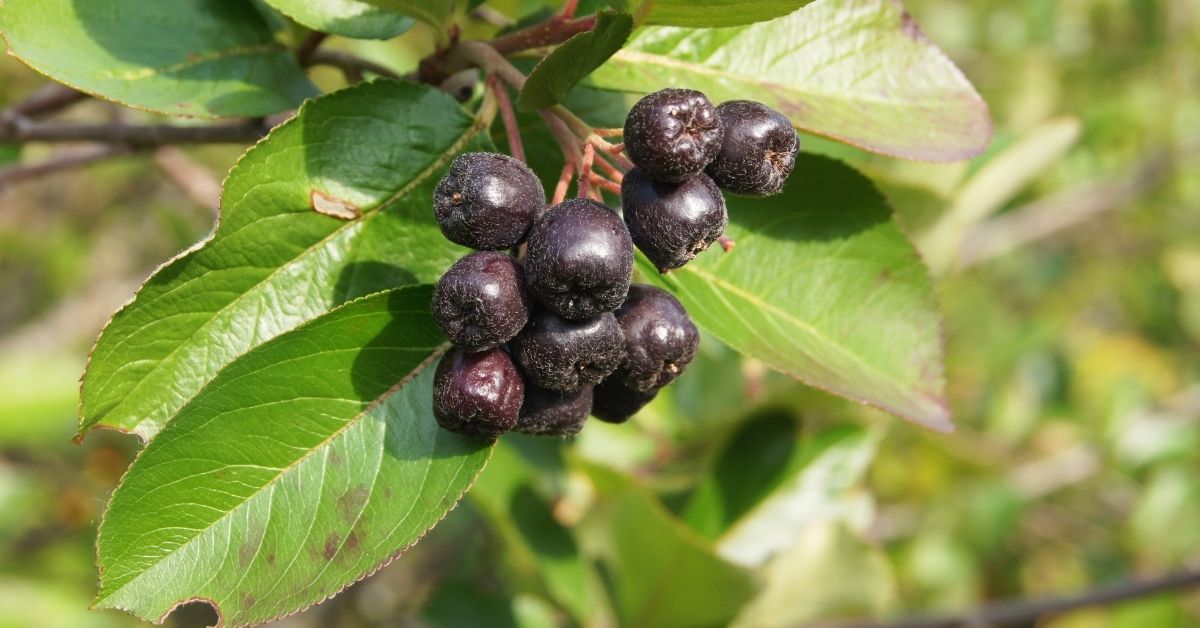
Landscaping: Many amateur gardeners are familiar with the chokeberry, which is used both as an aesthetic and a utilitarian plant. It is a year-round eye-catcher because of its lovely blossoms and beautiful fall hues.
The sturdy chokeberry, by the way, does not require a single spot in the garden; it may also be included in a freely growing hedge. Other fall hues, such as field maple (Acer campestre) or spindle, produce particularly appealing pairings (Euonymus).
The blooms are attractive to insects, but the berries are particularly appealing to birds. Fruits also provide us with important vitamins. The berries are high in vitamin C, folic acid, and the secondary plant chemical anthocyanin, which is great for color formation.
Wildlife: White-tailed deer and bunnies graze on the plants. Ruffed grouse, sharp-tailed grouse, and prairie birds consume the fruit.
Economic: Aronia berries may be canned whole or the juice extracted can be used to make jelly and healthy fruit beverages. Anthocyanins (the red pigment in the juice) and flavonoids are abundant in the juice. In the food business, the natural hue is useful since it is robust and durable. This plant is widely grown in Europe, with reports of harvests of up to 38 pounds of fruit per bush.
Dietary use:
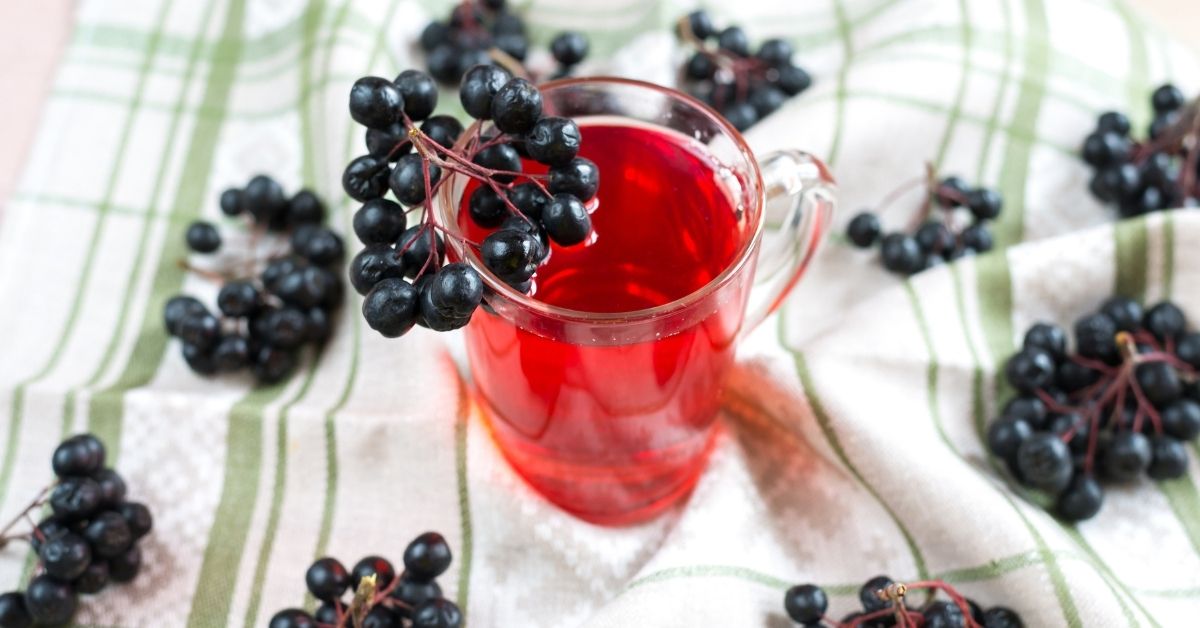
It also functions as antioxidant, binding free radicals in the body and reducing cancer risk. According to scientific studies, fruits have a therapeutic effect on the cardiovascular and immune systems, as well as stomach, bladder, intestinal, liver, and gallbladder ailments.
Chokeberries, on the other hand, should not be ingested in big quantities at once since, when eaten raw, they have a little laxative effect due to the amygdalin content. The fruits have a sour, acidic taste when raw.
They’re not the best for munching, but they’re fantastic for making juice, jelly, jam, and liqueur. When combined with other fruits such as currants, apples, apricots, and sea buckthorn, Aronia jam is extremely delectable. Dried berries can be used as tea or as a substitute for raisins.
Chokeberry Varieties
There are currently other forms of chokeberry fruit available, in addition to the wild Aronia melanocarpa. The ‘Nero’ cultivar is the most well-known: it produces consistent yields and has bigger umbels with up to 30 huge berries.
‘Viking’ is a Finnish selection that generates good yields as well. Its fruit is somewhat smaller than that of ‘Nero.’ If you want to consume chokeberries raw, go for the ‘Hugin‘ kind. It yields a lot of fruit and has a low tannin concentration. ‘Hugin’ takes about a month longer than the other varieties to reach full maturity. Their lustrous black fruits can be up to one centimeter thick.
The ‘Autumn Magic‘ variety reaches a height of two meters and produces enormous apple-shaped fruits. The general rule is that all chokeberries are self-fertile, but if you plant multiple types adjacent to each other, the fruit set will be boosted.
A variety from a native source in Michigan is marketed as ‘Morton‘ black chokeberry in the United States. It’s sold under the brand name Iroquois BeautyTM throughout the Midwest. The Plant Materials Center in Bismarck, North Dakota created ‘McKenzie,’ a bigger form (6 to 12 feet) specifically for conservation usage and agroforestry benefits.
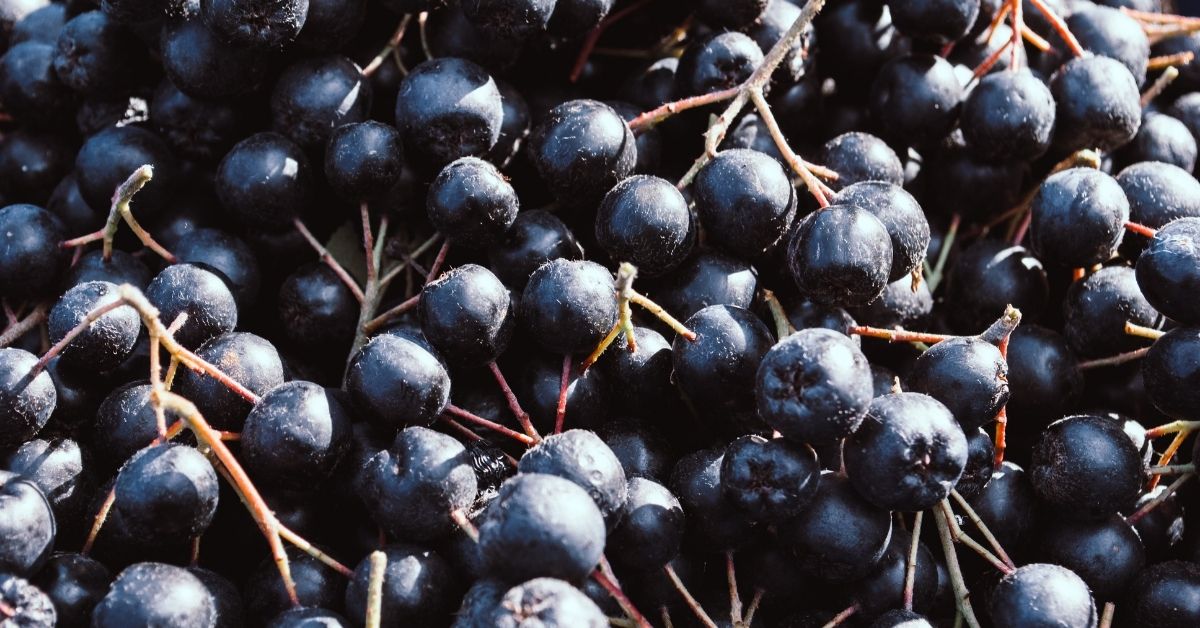
How to Propagate chokeberry
Aronia melanocarpa can be propagated by sowing, cuttings in summer, division, runners, or mounding. The chokeberry is best sown immediately after harvesting in summer. Seeds stored dry are subject to germination inhibition and must therefore be coldly stratified for 12 to 16 weeks before sowing.
Plant Production and Seeds
Seeds are the most common method of reproduction. The seeds are tiny, measuring a little over 1/16 inch in length. A pound of seed contains around 276,000 seeds, and 100 pounds of fruit is required to create one pound of seed. It is necessary to clean the fruit once it has been gathered in the fall.
The fruit can be macerated in a kitchen blender for modest amounts of fruit. A commercial macerator, such as a Dybvig® macerator, performs a good job of crushing bigger volumes of fruit. By floating the pulp off, you can get rid of a lot of it. Hand screens or a fanning mill can be used to separate the seed from the leftover dry pulp once the seed and residual pulp have been properly dried.
Chokeberry seeds have an internal dormancy that can be broken by stratifying them in damp peat for three months at temperatures ranging from 33 to 41 degrees Fahrenheit. It is advised that seeds be sown in September for nursery size seedling production. The seed that has been cleansed produces the best germination. The seed that has not been removed from the pulp leads to poor germination.
Diseases and pests
Black chokeberry looks to be disease-free and pest-free. When plants do not receive enough sunshine and air movement, mildew can develop.
Bonus: Aronia berry recipe
It’s not a good idea to consume the berries right from the bush since tannic acids give them a sour, astringent flavor, which is why they’re called astringent in medicine. The fruits are wonderfully dried, in cakes, as jam, juice, or syrup. You should expect a lot of color from them while harvesting and preparing them.
This may be utilized in a specific way: Aronia juice adds a crimson tint to smoothies, aperitifs, and cocktails. It is used as a coloring additive in the industry for confectionery and dairy goods. Aronia is an excellent choice for a natural garden hedge since its blooms attract insects and its berries attract birds.
In addition, the shrub’s spectacular wine-red color thrills us in the autumn. It’s low-maintenance and frost-resistant, and it even flourishes in Finland. The feeling chokeberry or Red Chokeberry (Aronia arbutifolia) is also available in the trade, in addition to Aronia melanocarpa (translated as “black fruit”). It produces attractive red fruits and displays vibrant fall hues.
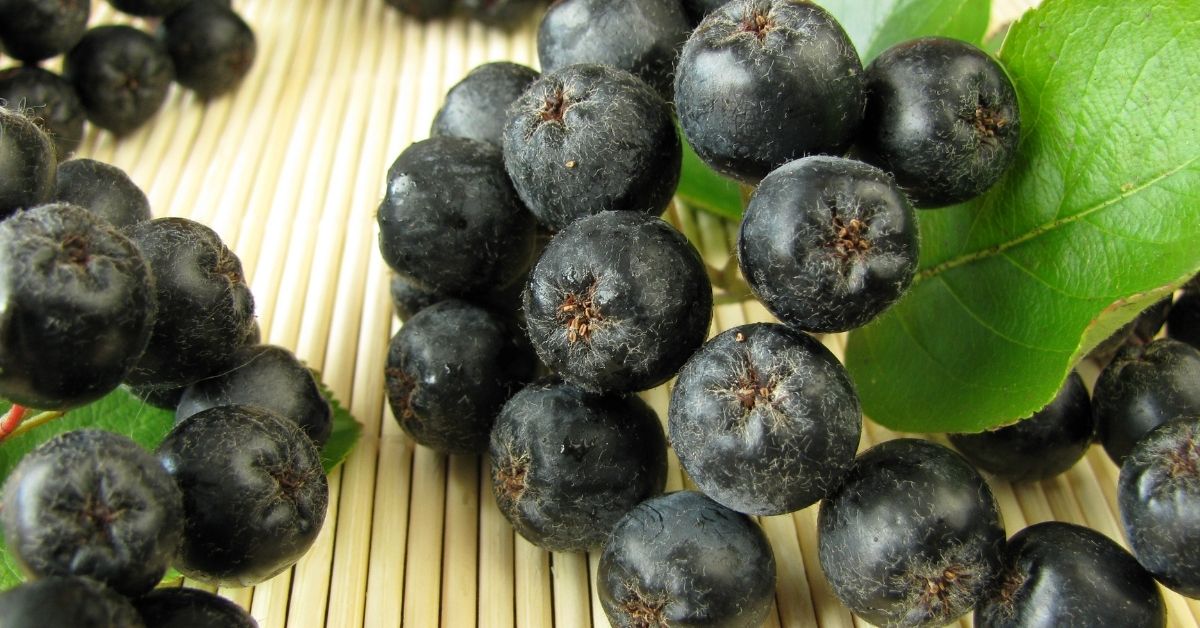
Recipe idea: Aronia berry tart with a meringue topping
For 6 to 8 tarts (diameter approx. 10 cm), you need:
- 125 g Butter
- 125 grams of sugar
- 1 whole egg
- 2 egg yolks
- 50 g cornstarch
- 125 grams of flour
- 1 level tsp baking powder
- 500 g Aronia berries
- 125 grams of sugar
- 2 egg whites
And this is how you proceed:
- Preheat the oven to 175°C
- Cream the butter and sugar with the egg and the two egg yolks. Mix the cornstarch, flour, and baking powder and stir in
- Pour the batter into the cake molds.
- Wash and sort the Aronia berries. Spread on the dough
- Beat the sugar with the egg white until stiff. Spread the whipped cream over the berries. Bake the tarts in the oven for about 25 minutes.
Simple Aronia jam
For 6 to 8 glasses of 220 grams, you need:
- 1,000 g fruits (Aronia berries, blackberries, jostaberries)
- 500 g preserving sugar 2:1
The preparation is simple:
- Wash the fruit, select and mix according to taste.
- Puree the well-drained berries and press through a sieve.
- Put the resulting fruit pulp in a saucepan, mix with the preserving sugar and bring to a boil.
- Bring to a simmer for 4 minutes, stirring constantly.
- Pour the jam into prepared (sterile) jars while still hot and close tightly.
Tip: The jam can also be refined with cognac, brandy, or whisky. Before bottling, add a tablespoon of it to the hot fruit puree.
What are some Black chokeberry benefits?
Chokeberry is a fruit that is popular in Russia and other regions of Eastern Europe.
Chokeberry is used to treat heart disease, high cholesterol, high blood pressure, and other ailments, however, there is no scientific proof to back up these claims.
Antioxidants and other compounds can be found in chokeberry. These substances may aid in the protection of the heart and blood vessels, as well as the reduction of edema and blood sugar levels and the killing of cancer cells.
When should I cut back my chokeberry?
For most shrubs, late winter to early spring is the optimal time to prune. Prune spring-blooming bushes after the blossoms have faded. Remove up to a third of the total shrub, leaving older branches to create a strong, long-lasting, and attractive structure.
Are chokeberries poisonous?
Chokecherries can be eaten whole, but not as a full fruit. The poisonous part of the fruit, like cherries and apricots, is the seed or pit, not the meat or skin. Chokecherries contain amygdalin, which the body converts to cyanide, a lethal toxin, which is why cherry pits are rarely consumed.
